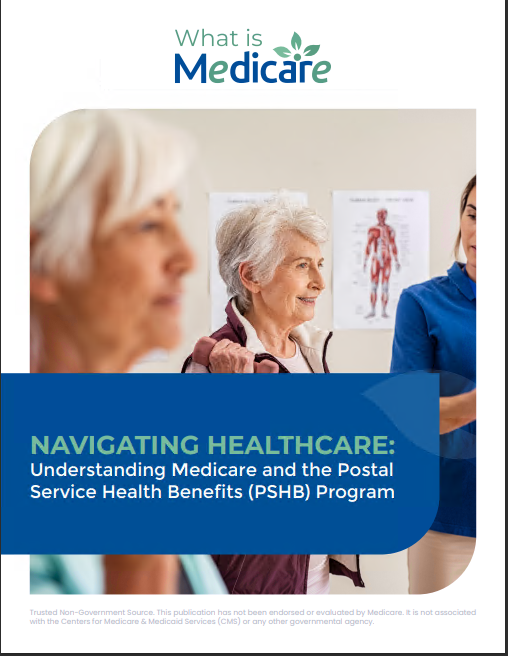Will PSHB Cost More Than FEHB?
Understanding the Financial Implications
As USPS professionals and retirees consider their healthcare options, one question looms large: Will the Postal Service Health Benefits (PSHB) Program cost more than the Federal Employees Health Benefits (FEHB) Program? In this guide, we’ll explore the factors that influence healthcare costs under both programs, examining key considerations and potential financial implications for USPS professionals and retirees.
Understanding PSHB and FEHB:
Before delving into the cost comparison, it’s essential to understand the fundamental differences between the PSHB and FEHB programs. PSHB, established under the Postal Service Reform Act of 2022, is tailored specifically to meet the healthcare needs of USPS professionals and retirees. FEHB, on the other hand, is available to federal employees across various government agencies, offering a wide range of health insurance plans.
Factors Influencing Healthcare Costs:
Several factors contribute to healthcare costs under both PSHB and FEHB, including:
- Plan Selection: The choice of health insurance plan can significantly impact healthcare costs. Both PSHB and FEHB offer multiple plan options with varying premiums, deductibles, copayments, and coinsurance rates.
- Coverage Benefits: The scope of coverage benefits provided by each program can influence overall healthcare costs. Plans with comprehensive coverage may have higher premiums but lower out-of-pocket expenses for covered services.
- Provider Networks: Access to preferred healthcare providers within the plan’s network can affect costs. In-network services typically have lower out-of-pocket expenses compared to out-of-network providers.
- Prescription Drug Coverage: The availability and cost of prescription drug coverage, including formularies and copayments, can impact overall healthcare expenses, especially for individuals with chronic conditions requiring ongoing medication.
- Medicare Integration: PSHB’s integration with Medicare for eligible annuitants may lead to potential cost savings by leveraging Medicare benefits. FEHB participants may also opt for Medicare coverage, depending on eligibility and individual preferences.
Comparing Costs: PSHB vs. FEHB
While it’s challenging to predict with certainty whether PSHB will cost more than FEHB for all participants, a comparative analysis can shed light on potential cost differences:
- Premiums: PSHB premiums may differ from FEHB premiums due to factors such as plan design, risk pool composition, and Medicare integration. USPS professionals and retirees should compare premium rates for comparable coverage options under both programs to assess cost differentials.
- Out-of-Pocket Expenses: In addition to premiums, individuals should consider potential out-of-pocket expenses, including deductibles, copayments, and coinsurance, when evaluating overall healthcare costs. A thorough review of plan benefits and cost-sharing requirements is essential for accurate cost comparison.
- Medicare Integration: For eligible annuitants, PSHB’s integration with Medicare Part B may offer cost-saving opportunities by leveraging Medicare benefits for covered services. However, FEHB participants may also opt for Medicare coverage, potentially impacting overall healthcare costs.
- Plan Options and Benefits: The availability of plan options and the scope of coverage benefits vary between PSHB and FEHB. Individuals should assess their healthcare needs and preferences to determine which program offers the most suitable coverage at the most affordable cost.
Considerations for USPS Professionals and Retirees:
As USPS professionals and retirees weigh their healthcare options, several considerations can help inform their decision-making process:
- Evaluate Total Cost of Coverage: Consider not only premium rates but also potential out-of-pocket expenses when comparing PSHB and FEHB plans.
- Review Coverage Benefits: Assess the scope of coverage benefits provided by each program, including prescription drug coverage, preventive care, and specialty services, to ensure adequate healthcare coverage.
- Explore Medicare Integration: Understand the implications of Medicare integration under PSHB and FEHB, including eligibility criteria, enrollment requirements, and potential cost savings.
- Seek Expert Guidance: Consult with Licensed Insurance Agents or other qualified healthcare professionals to obtain personalized guidance and assistance in choosing the right healthcare plan for your needs.
Conclusion
While predicting whether PSHB will cost more than FEHB for all participants is challenging, understanding the factors influencing healthcare costs under both programs is essential for informed decision-making. By carefully evaluating premium rates, out-of-pocket expenses, coverage benefits, and Medicare integration options, USPS professionals and retirees can select the healthcare plan that offers the best value and meets their individual needs.
Ready to explore your healthcare options further? Download our comprehensive eBook. Alternatively, connect with our Licensed Insurance Agents for personalized assistance in choosing the right healthcare plan for your needs. Empower yourself to make informed decisions about your healthcare coverage today!



